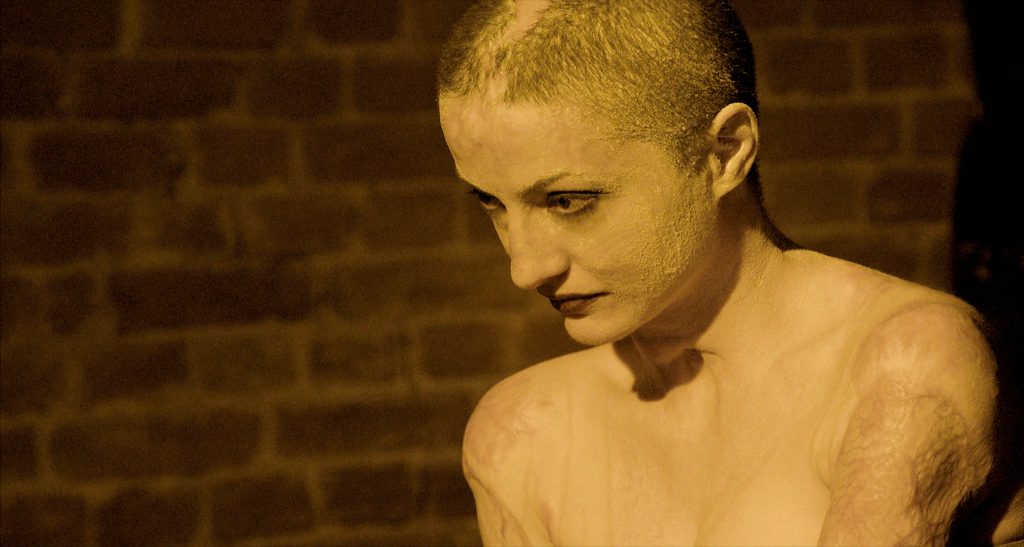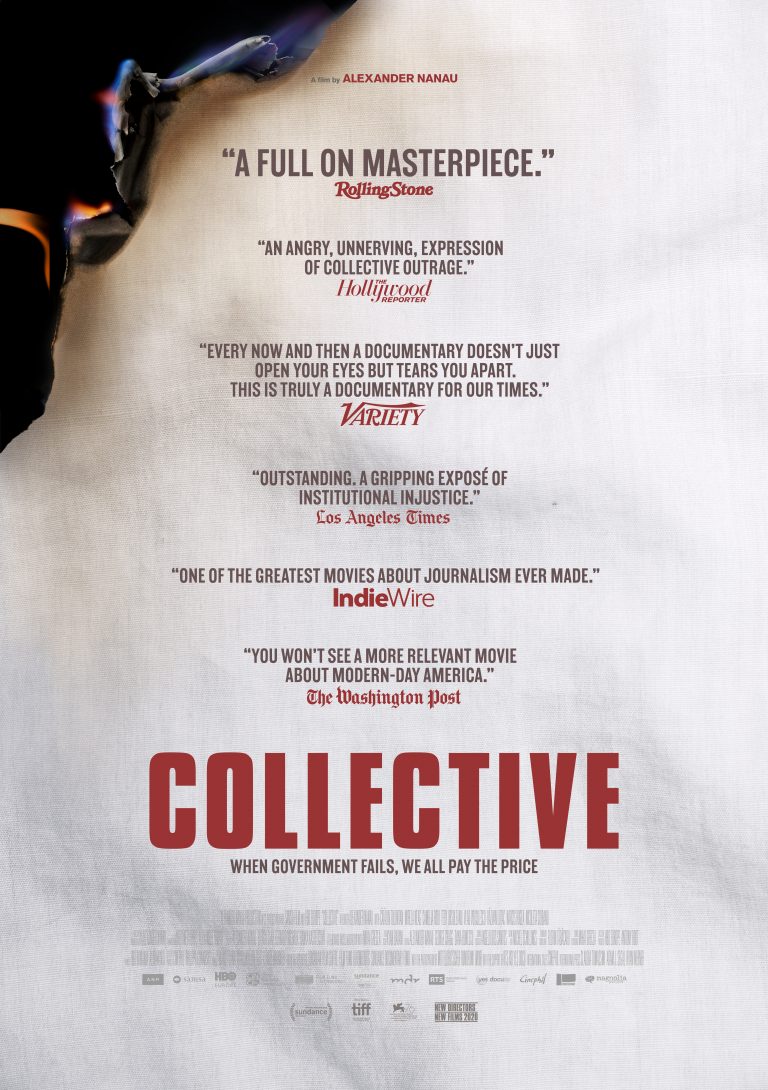Oscar Nominations:
Documentary Feature
International Feature
On October 30, 2015, a fire broke out in the Colectiv nightclub in Bucharest, Romania. The nightclub, located in a former factory building, had no fire exits and inadequate fire retardation systems. Twenty-seven people died on the scene, of their burns, toxic inhalations or trampling. More than 180 were sent to hospitals. The catastrophe provoked serious questions about how such a deathtrap had been allowed to operate and what kind of safety regulations existed or weren’t enforced.
Weeks after the fire, nearly 40 of those hospitalized had also died. Most of them succumbed not from their burns, but from bacterial infections caused by inadequate disinfection of their wounds and hospital sanitation. And these failures, it turns out, were the result of even worse government and corporate malfeasance. The scandal grew into a major indictment of the entire Romanian government and, eventually, the health minister was replaced by a former political activist and his team of technocrats, who set out on a parallel track with the Romanian press to uncover the truth about who profited from the lax operation of Bucharest’s hospitals and hold them accountable.
This amazing documentary tells the story of the investigations from the beginning, with cell-phone footage taken in the nightclub that night, hospital scenes showing the seriousness of the burns and the subsequent infections, and fly-on-the-wall videos of the ethical new health care minister and a dogged journalist as their independent inquiries build on one another’s findings to lay bare the kleptocracy running the country’s official institutions. As RogerEbert.com’s Sheila O’Malley wrote: “It’s a portrait of corruption so total that oftentimes the participants onscreen look at one another helplessly, like ‘How can we even combat this? Where do we even start?’”
At the core of the journalistic investigation is a highly unlikely team: a group of reporters working for a Bucharest newspaper, Gazeta Sporturilor (Sports Gazette). The documentary never exactly explains how sports reporters were able to undertake investigative reporting of this depth and with such sustained motivation. I think that, maybe, because no one really expected this world-class performance from the Sports Gazette, they had an advantage of operating “under the radar.” A lot of credit must be given to the team leader, editor Cătălin Tolontan, a reserved, unflappable but persistent man who is the “hero” of the film. Tolontan and his team succeed in untangling a huge, nasty Gordian knot by diligently following each lead and clue until all the “dirty little secrets”—the reckless disregard of the managers of Bucharest’s hospitals for the well-being of their patients, the unconscionable profiteering of hospital suppliers and the complicity of bribed government officials—have been revealed.
The documentary’s creation was also an act of heroism on the part of Romanian-born Alexander Nanau, who produced, directed, and co-wrote the film, as well as serving as its cinematographer and co-editor. Beginning to film almost as soon as the story of the fire broke, Nanau was able to insert himself into the staff meetings of the Sports Gazette and, even more impressively, of Health Minister’s Vlad Voicelescu.
It’s fascinating to watch in real time as the minister and his assistants struggle at first with how best to answer questions from the press and grieving families about why so many people had to die and then to seek to answers themselves.
(Voicelescu might well the “David” working to bring down the heartless governmental Goliaths.) Nanau’s coverage of this courageous man’s attempts to root out the evil is nothing short of courageous itself. It is said that Nanau hid different segments of the film in various locations in Romania before shipping all of it to Germany for final assembly—a desperate act of preservation of not just the film, but probably of himself, as well.
Nanau’s approach is even more remarkable because it does not employ any of the standard documentary techniques. There are no “talking heads,” answering the narrator’s questions directly into a camera. Except for some introductory exposition, there are no on-screen identifications or context-setting explanations. Instead, Nanau relies on masterful juxtaposition of conversations and snippets of TV news reports to document the flow of events. “Collective” has the same look and feel as the investigative thriller, “Spotlight,” which won the 2016 Academy Award for Best Picture for its depiction of the Boston Globe’s expose of systemic sex abuse of children by local Roman Catholic priests. And, yet, “Collective” is not fiction—it is all very much real.
An extended set of touching scenes involves Tedy Ursuleanu, a strikingly beautiful young woman who was seriously disfigured by the fire. Ursuleanu is first seen posing unclothed for a photo shoot. The black-and-white photographs, which are ultimately displayed at an art exhibition at which Tedy meets Vlad and they warmly embrace, powerfully document the physical damage sustained by survivors of the fire. But even more powerful is watching Ursuleanu become a spokesperson for the victims and an ally of Voicelescu. Nanau’s decision to intercut the action with these intimate scenes is a brilliant one.
It might be tempting to dismiss this story as emblematic of the “backwardness” of Eastern Europe. But that would be a serious mistake. As you watch the various layers of this onion being peeled to expose its putrid core, it becomes easy to understand how a mafia state could take over just about anywhere. The capitalistic point of view always puts short-term profits above all other considerations. The conservative point of view is to deny government has a role in trying to protect the people from businesses who are concerned only with earning a profit. The point of view is that government should help line the pockets of business.
Corruption can, and does, occur in any political system, including, most obviously, our own. What makes it even worse is how those in power frequently try to shut down the voices who can make their misdeeds public: journalists and the press. Muzzle them and insidious partnerships between business and government will truly go unchallenged and disasters like the Colectiv fire will become the norm, not an awful exception.
The movie ends on a somewhat pessimistic note, although I won’t go into detail about what that entails, other than to say that the ruling Social Democratic Party remains in power. However, viewers should know that, a month after this film was released in November 2020, Romania held another election. Perhaps in part because of the collective efforts of Tolontan, Voicelescu and Nanau, the ruling Social Democratic Party is replaced by a coalition of opposing parties. The mayor of Bucharest—who we have seen isn’t exactly on the side of the good guys—is voted out. And Voicelescu, the embattled health minister who had been forced out of office, is reinstated to continue his work uncovering graft and malfeasance in the nation’s health care system. Maybe there is hope after all.
It is interesting that, according to its IMDb audience rating and its Metacritic score, this movie is considered the best of all 41 Oscar-nominated films. That is an impressive achievement, considering that it is the first Romanian film to be nominated for an Academy Award. In fact, it was nominated in both the Feature-Length Documentary and Best International Feature Film categories. It is an important movie, and one that should be widely seen.
Is it the best movie of the year, though? I’m not so sure. The other two nominated documentaries I’ve reviewed in this series are extremely competitive. One must make the distinction between how you feel about the subject of a documentary and the level of its filmmaking. For that reason, I’m not ready to give “Collective” top billing. (4 stars)
(Available on Hulu and Netflix DVD/and to rent on Prime Video)


